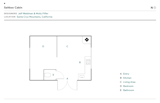Collection by Christopher Murphy
With his mother moving from Massachusetts to California to be closer to family, architect Peter Liang created a 265-square-foot tiny home, dubbed the Kleines Haus, behind his sister’s residence in Oakland for the matriarch to land in. “Since we are a mixed family, it’s key that my kids are close to their grandparents,” says homeowner Stefanie Liang Chung. “Now their German grandmother is teaching them, and I’m grateful that I have an Asian partner who knows that you take in your in-laws.”
With a new baby on the way and the soon-to-be grandmother moving in, Seattleites Ilga Paskovskis and Kyle Parmentier asked Best Practice Architecture to expand their detached garage into a 570-square-foot ADU, which they now call the Granny Pad. “We can see the joy it brings Grandma when the baby comes over to visit,” says Kyle. “It’s the best part of her day.”
6 more saves



















